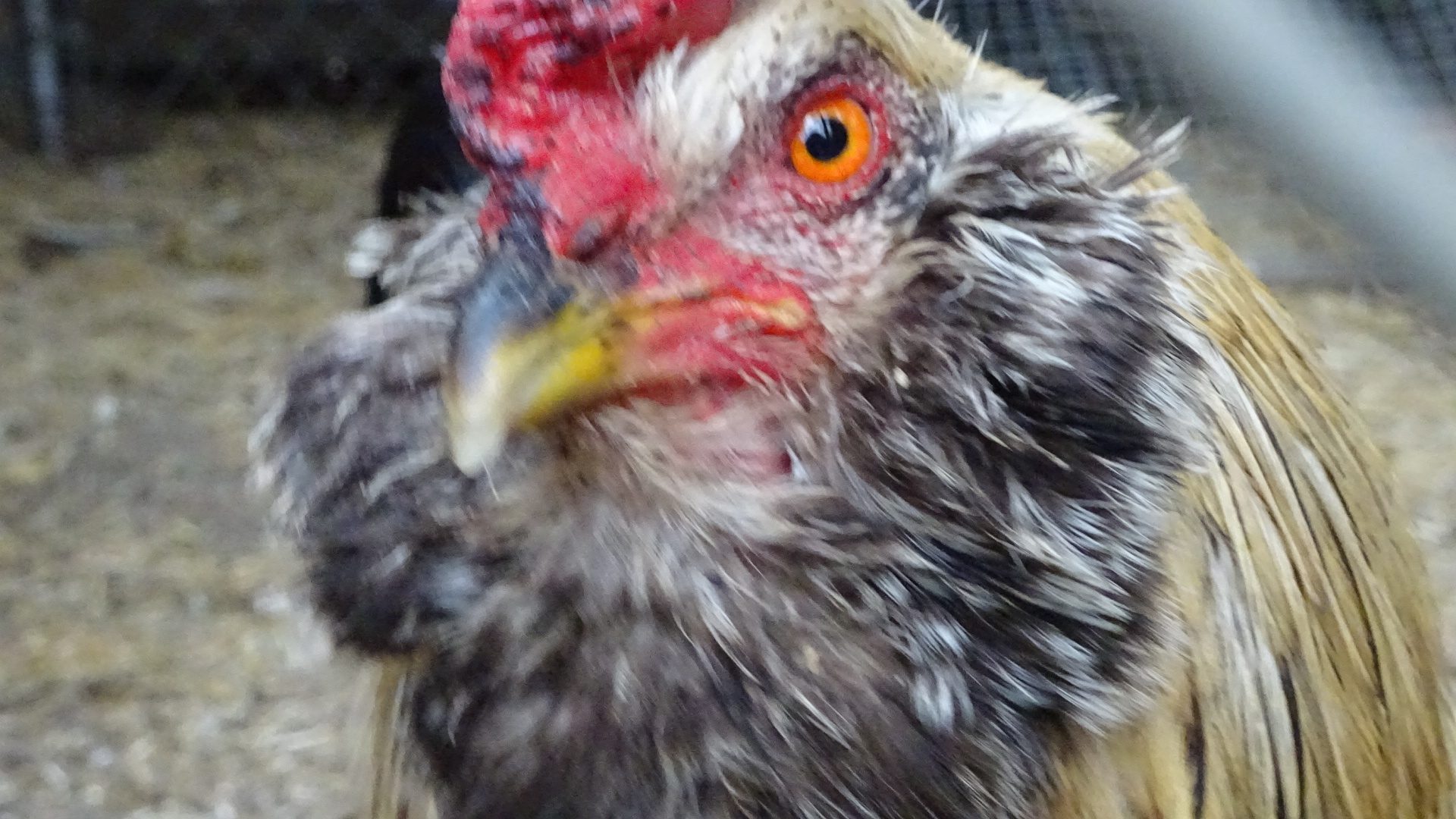tri1sam
Hatching
- Aug 6, 2015
- 9
- 0
- 7
So this is my first time ever having chickens. I started with two that I found in the woods hiking locked in a cat carrier. Then a few days later while trying to locate a pen for them a neighbor was moving and offeren me her pens/ Serama chickens and 2 Roosters. The pens were disgusting and to say the least the little guys are in a much better place now that they have someone that cares looking after them.
My concern is a few things.
1.First I think they may have fowl pox. (Flockwide) I've noticed a lot of black marks on combs ranging from little dots to large oval-shaped spots.
2. On my Rhode Island Red hen her comb is orangish and folded over. Also her feathers especially on her back side are kind of mangy looking. Parasite of some sorts?
3.The Seramas are having a lot of feather issues as well. On rooster has lost all feathers on the front of his neck and the skin is VERY red. Another hen has lost neck and chest feathers but displays no signs of being broody and another has a wing where you can see the vertical bases of her feathers because she's lost the horizontal ones that would usual be there to cover that up.
4. On the Easter egger rooster his feet seem to be very scaley and one back talon looks almost like it has crustations growing on it.
5. Both large roosters have a lot of black on their comb and beak.
I've attached a bunch of photos. Any info would be much appreciated as I'm completely new to this.






















My concern is a few things.
1.First I think they may have fowl pox. (Flockwide) I've noticed a lot of black marks on combs ranging from little dots to large oval-shaped spots.
2. On my Rhode Island Red hen her comb is orangish and folded over. Also her feathers especially on her back side are kind of mangy looking. Parasite of some sorts?
3.The Seramas are having a lot of feather issues as well. On rooster has lost all feathers on the front of his neck and the skin is VERY red. Another hen has lost neck and chest feathers but displays no signs of being broody and another has a wing where you can see the vertical bases of her feathers because she's lost the horizontal ones that would usual be there to cover that up.
4. On the Easter egger rooster his feet seem to be very scaley and one back talon looks almost like it has crustations growing on it.
5. Both large roosters have a lot of black on their comb and beak.
I've attached a bunch of photos. Any info would be much appreciated as I'm completely new to this.

